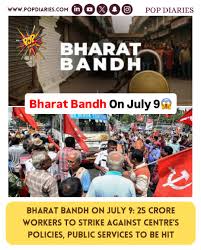Understanding the Current Bharat Bandh in India

Introduction
The Bharat Bandh, which literally translates to ‘India Shutdown’, refers to a nationwide strike that mobilizes various sections of society to protest against government policies or decisions. This topic is highly relevant in contemporary India, especially with ongoing economic challenges and social issues. Recently, several states have witnessed significant protests that have garnered national attention, making the Bharat Bandh a critical aspect of current social and political discourse.
The Background of the Latest Bharat Bandh
The recent Bharat Bandh, observed on 2nd October 2023, was initiated by a coalition of farmer unions, labor organizations, and various political parties. The primary grievances revolved around increasing fuel prices, rising inflation, and the demand for better minimum support prices for crops. Organizers claimed that the government’s failure to address these issues had led to widespread discontent among the masses.
In cities like Delhi, Mumbai, and Kolkata, business operations were significantly affected as many shops and markets voluntarily closed their doors. Public transportation, including buses and trains, ran on limited schedules, causing inconvenience to daily commuters. The band was especially prominent in rural areas, where farmers took to the streets in large numbers, showcasing solidarity for their cause.
Impact of the Bharat Bandh
The Bharat Bandh saw varied responses across India. In regions heavily dependent on agricultural and labor sectors, the impact was more pronounced, leading to disruptions in normal life. Nonetheless, sectors such as IT and other service industries maintained their operations, which suggests a divide in the participation and impact of the strike based on local economies.
Authorities anticipated possible unrest and increased police presence in major cities to prevent any escalation of protests. Fortunately, reports indicated that, for the most part, the protests remained peaceful, although there were instances of clashes between protesters and police in some areas.
Conclusion
The Bharat Bandh reflects the growing need for dialogue between the government and its citizens regarding pressing economic issues. While such protests can disrupt daily life, they also highlight the collective grievances of the populace and the potential for significant political change. Observers agree that continuing tension between the government’s economic policies and public dissatisfaction may lead to further protests in the future. Citizens are urged to stay informed about their rights and the consequences of such national strikes, as they may continue to shape the socio-political landscape of India in the months to come.


